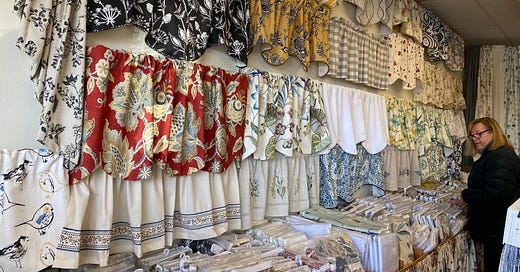Some people have math anxiety. Not me. I get a case of nerves over sewing and all things related to bolts of cloth.
I owned a sewing machine once when I took an upholstery course. Threading it was a source of mystery. My older brother Tim, living with us while he recovered from shoulder surgery, could thread the machine for me with ease even with his arm…




